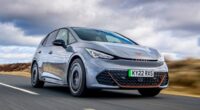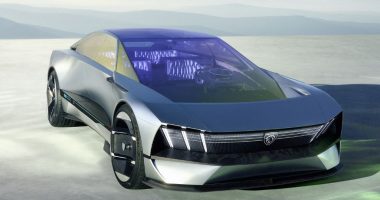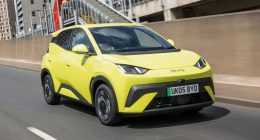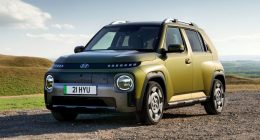After months of teaser images, the covers have finally been removed from Volkswagen’s new Amarok pick-up ahead of deliveries commencing at the end of the year.
Developed in conjunction with the latest Ford Ranger, the second-generation Amarok is said to be “bigger, more powerful, more athletic and more charismatic”. At launch, the commercial vehicle is being offered in‘Amarok’, ‘Life’ and ‘Style’ variants, as well as range-topping ‘PanAmericana’ that is off-road-biased and ‘Aventura’ which has “exclusive styling”.
The Amarok is defined by its straight, upright bonnet, square headlights framed within a slim grille, and X-shape front bumper graphic that is stamped with the word ‘Amarok’ – a feature that is repeated on the tail-gate, albeit on a grander scale.
Initially, UK examples will all be four-door double cabs. A wheelbase that is 193mm longer than its predecessor promises more room for those travelling in the back and a load bed that can accept two pallets loaded in sideways.
Payload has grown from one tonne to 1.16 tonnes and, similar to the Ford Ranger, items in the back can be secured with an electrically-operated roll cover from either inside or outside the vehicle. New eye rings are also included and each is capable of handling up to 500kg.
Loads of up to 350kg can be rested on the roof rack compared to 150kg previously – “sufficient for a four-person roof tent that will be available as an accessory” – and the Amarok’s wading depth has risen by 300mm to 800mm.
Other options include alloy wheels measuring up to 21-inches in diameter, trailer mounts, styling bars, a snorkel to supply the engine with fresh air when driving through water, and a bike holder or multifunction carrier system for the cargo area.
Powering the Amarok is a four- and six-cylinder diesels and a four-pot petrol mated to 5- and 6-speed manuals, and 6- and 10-speed automatic transmissions. Two ‘4Motion’ systems are offered and, like the gearboxes, are dependent on the engine.
The first ‘4 Motion’ set-up is a part-time affair that reacts to driving conditions while the second is permanent all-wheel-drive that utilises a two-speed electromechanical transfer case for superior traction – and ability – in challenging off-road terrain.
The 2-litre turbo diesel develops 148bhp and 228bhp rising to 201bhp and 207bhp in twin-turbocharged guise. A 3-litre V6 diesel comes with either 237bhp or 247bhp depending on the market. And from the start of next year, a 2.3-litre four-cylinder petrol engine joins the line-up. It will be good for 298bhp.
Inside, Volkswagen’s designers have prioritised a “functional and high-quality” cabin that centres around a portrait-style touchscreen and a digital instrument binnacle for the driver. In-car functions are selected using a mix of touch-operations and physical push or rotary switches.









